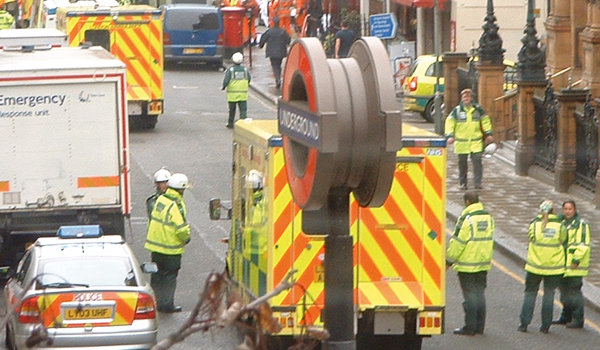Could analytics help fight terrorism?
For policing purposes, analytics is generally described as the capability to deal with bulk data in real-time from within police systems, digital information and intelligence from the internet. The question for many in law enforcement is could probabilistic data analytics help fight terrorism?
For policing purposes, analytics is generally described as the capability to deal with bulk data in real-time from within police systems, digital information and intelligence from the internet. The question for many in law enforcement is could probabilistic data analytics help fight terrorism?
Richard Seery, director of client services at Think Big Analytics, says the problem is that with global terrorism on the rise, terrorists, those involved in serious organised crime and cyber criminals are getting increasingly bold.
Governments and enforcement agencies are under increasing pressure, with frontline services in the spotlight as they protect lawful and innocent citizens, he said.
Speaking as part of techUKs third annual Public Sector 2030 Conference (PS2030) held recently, Mr Seery said the perpetrators of terrorism and crime hide their identity by falsifying their activities: Travel, internet and social media, finances, welfare benefits, tax declarations, visa and passport applications the sophistication of deception is pervasive like never before.
The troubling truth is that the footprint of terrorists and other criminals is often hidden (in part) within the deluge of data owned by the same organisations that seek to identify them.
If we could identify the footprints, the locations, events and objects that link them, that data could tell us where these perpetrators have been and what theyve done. Crucially, it could help us predict when and where an attack is likely to occur next.
It all sounds so easy: identify data, collect and store it, match it and then derive insights through analysis. In reality, there are layers of complexity to contend with and choosing the right analytical model is key.
The East Midlands Policing Academic Collaboration (EMPAC) a partnership of police forces, police and crime commissioners and universities in the region that creates a platform through which knowledge can be shared and developed says traditional analysis can be slow, with more retrospective crunching and assessing of information by collating and trawling through various separate sources.
We all would probably accept that the world has pretty much gone digital, so is it time for policing to catch up, or maybe get ahead? it says. You may think this is more Minority Report than Dixon of Dock Green, but policing just reflects changes in wider society. Just what would be the opportunities from advancing analytics for policing in combating emergent risk, threat and harm?
Jon White, Threat Assessment Unit manager for Leicestershire Police one of the five forces in EMPAC says data quality is a massive issue for police forces, but that doesnt stop the likes of Google making sense of the data and processing it accordingly.
Policing needs to be more like Google Now, which learns about an individuals habits and begins to volunteer things that someone needs to know, at the right time, he said.
Mr Seery said the technologies and methodologies in the storage and transfer of data have advanced tremendously over the past decade.
Data storage in particular is a hot topic for government departments to consider, and decisions on the right technologies to adopt should focus on the trade-off between cost and performance, he added.
When it comes to actually analysing all this data, form is everything. You could do much worse than adopt a POLE(R) data model with probabilistic matching.
POLE stands for: Party (person or cohort); Object (eg, passport or plane); Location; and Event. (R) focuses on the relationships between these four factors. When data is collected and stored it is immediately ready for matching and analysis.
With POLE(R) in place, probabilistic matching can work to match entities between data sets, explained Mr Seery.
For example, the records of John Smyth and Jon Smith could share a telephone number, and so would match using probabilistic techniques. Deterministic matching, on the other hand, would not match these two records.
Gov






